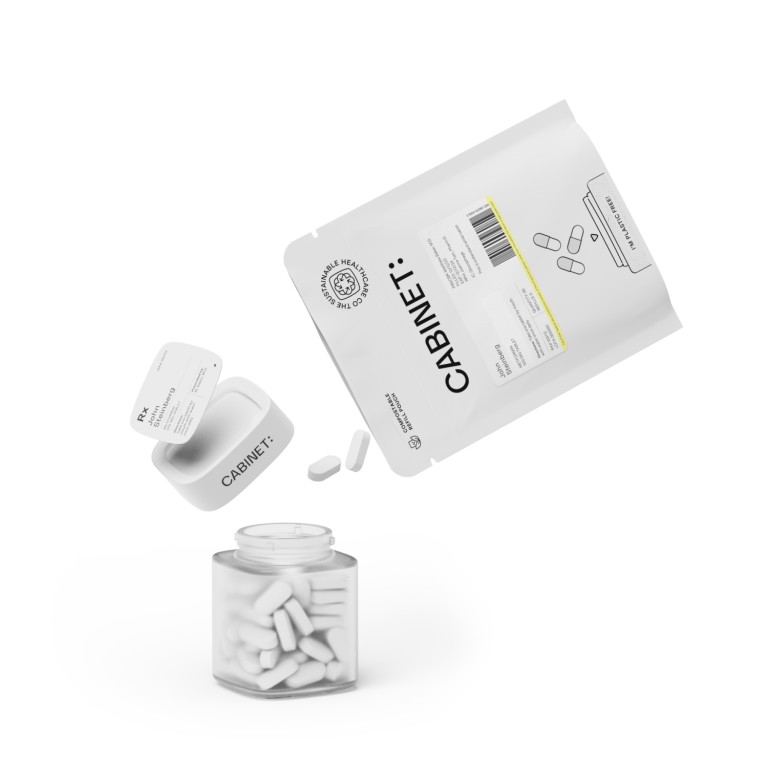Post-Traumatic Stress Disorder (PTSD) is a debilitating mental health condition that affects millions of individuals worldwide. Characterized by intense fear, anxiety, and distress triggered by a traumatic event, PTSD can have profound impacts on a person's well-being and quality of life. Fortunately, several treatment options are available to help manage the symptoms of PTSD and improve the overall mental health of affected individuals. One such treatment option is Sertraline, commonly known as Zoloft.
Understanding PTSD: An Overview
In order to comprehend the effectiveness of Sertraline in treating PTSD, it is vital to first gain a comprehensive understanding of this complex mental health disorder. PTSD, or Post-Traumatic Stress Disorder, is a condition that develops in some people who have experienced or witnessed a traumatic event such as a natural disaster, a serious accident, war, terrorism, or physical or sexual assault.
Individuals with PTSD often experience a range of symptoms that can significantly impact their daily lives. These symptoms may include intrusive thoughts or memories of the trauma, nightmares, flashbacks, hypersensitivity to triggers reminiscent of the traumatic event, avoidance of reminders of the trauma, cognitive and mood disturbances, and changes in sleep and appetite patterns. The severity and duration of these symptoms can vary widely among individuals.
Defining PTSD and Its Symptoms
Post-Traumatic Stress Disorder, as defined by the Diagnostic and Statistical Manual of Mental Disorders (DSM-5), is characterized by a combination of four primary symptom clusters: intrusive thoughts and memories, avoidance behaviors, negative mood and cognition, and heightened reactivity and arousal. These symptoms must persist for more than one month and significantly interfere with social, occupational, and other important areas of functioning in order to be diagnosed as PTSD.
It is important to note that PTSD can affect anyone, regardless of age, gender, or background. Traumatic events can have a profound impact on the human psyche, and the development of PTSD is a natural response to such experiences.
The Impact of PTSD on Mental Health
The impact of PTSD on mental health cannot be understated. Individuals with this disorder often experience high levels of anxiety and distress, which can lead to difficulties in personal relationships, employment, and overall quality of life. Additionally, the chronic nature of PTSD can exacerbate other mental health conditions such as depression, substance abuse, and suicidal ideation.
Living with PTSD can be challenging, as individuals may constantly feel on edge, experience intense emotions, and struggle with trust and intimacy. The symptoms of PTSD can also manifest physically, with individuals experiencing headaches, stomachaches, and other physical ailments as a result of the constant stress and anxiety.
It is crucial, therefore, to identify effective treatments that can alleviate the symptoms of PTSD and improve the mental well-being of those affected.
Current Treatment Options for PTSD
Several treatment modalities have been developed to address the complex nature of PTSD. These treatments fall into three broad categories: psychotherapy, pharmacotherapy, and alternative therapies.
Psychotherapy, such as Cognitive-Behavioral Therapy (CBT) and Eye Movement Desensitization and Reprocessing (EMDR), aims to help individuals identify and change negative thought patterns and develop coping strategies for managing triggers and symptoms. Through therapy, individuals can gain a better understanding of their trauma and learn healthier ways to process and cope with their experiences.
Pharmacotherapy, on the other hand, involves the use of medications to target the biological underpinnings of PTSD symptoms. One such medication is Sertraline, an antidepressant that is commonly prescribed for individuals with PTSD. Sertraline works by increasing the levels of serotonin, a neurotransmitter that plays a key role in regulating mood, in the brain. By restoring the balance of serotonin, Sertraline can help alleviate symptoms of depression, anxiety, and intrusive thoughts associated with PTSD.
Alternative therapies, such as yoga, meditation, and acupuncture, have also shown promise in reducing symptoms of PTSD. These holistic approaches focus on promoting relaxation, mindfulness, and overall well-being, which can have a positive impact on mental health.
It is important to note that the effectiveness of different treatment options may vary from person to person. What works for one individual may not work for another, highlighting the need for personalized and comprehensive treatment plans.
Sertraline (Zoloft): An Introduction
Sertraline, marketed under the brand name Zoloft, is a selective serotonin reuptake inhibitor (SSRI) that is commonly prescribed to treat a variety of mental health conditions, including depression, anxiety disorders, and obsessive-compulsive disorder (OCD). As an SSRI, Sertraline works by increasing the levels of serotonin, a neurotransmitter in the brain, which plays a key role in regulating mood, sleep, appetite, and other critical functions.
What is Sertraline?
Sertraline is an FDA-approved medication that is classified as an antidepressant. It is available in tablet and liquid form, and the prescribed dosage may vary depending on the individual's specific needs. Sertraline is typically taken once daily, with or without food, and it is important to follow the prescribed dosage and instructions provided by a qualified healthcare professional.
How Does Sertraline Work?
The precise mechanism of action of Sertraline is not fully understood. However, it is believed that the medication works by inhibiting the reuptake of serotonin, thereby increasing the availability of serotonin in certain areas of the brain. By modulating serotonin levels, Sertraline helps improve mood, reduce anxiety, and promote overall mental well-being.
Common Uses of Sertraline
In addition to its use in treating depression, anxiety disorders, and OCD, Sertraline has also been approved by the FDA for the treatment of PTSD. This underscores its important role in managing the symptoms of this debilitating condition.
In clinical practice, Sertraline has shown efficacy in reducing hyperarousal symptoms, intrusive thoughts, and avoidance behaviors associated with PTSD. Moreover, it has demonstrated potential benefits in improving sleep quality and depressive symptoms in individuals with PTSD.
Furthermore, Sertraline has been studied for its potential use in other mental health conditions, such as panic disorder, social anxiety disorder, and premenstrual dysphoric disorder (PMDD). Research has shown promising results in these areas, suggesting that Sertraline may be a valuable treatment option for individuals struggling with these conditions.
It is worth noting that Sertraline is not a cure-all solution, and its effectiveness may vary from person to person. Some individuals may experience significant improvement in their symptoms, while others may not respond as well. It is important for individuals considering Sertraline as a treatment option to have open and honest discussions with their healthcare providers to determine the best course of action.
Like any medication, Sertraline is not without its potential side effects. Common side effects may include nausea, diarrhea, dizziness, and insomnia. These side effects are typically mild and transient, but it is important to report any persistent or severe side effects to a healthcare professional.
In conclusion, Sertraline, also known as Zoloft, is a widely prescribed SSRI that is used to treat various mental health conditions. Its mechanism of action involves increasing serotonin levels in the brain, which can help improve mood and reduce symptoms of depression, anxiety, and OCD. Additionally, Sertraline has been approved for the treatment of PTSD and has shown potential benefits in other conditions as well. However, it is important to work closely with a healthcare professional to determine the appropriate dosage and monitor for any potential side effects.
The Role of Sertraline in Treating PTSD
Given its effectiveness in managing various mental health conditions, Sertraline has been extensively studied as a potential treatment option for PTSD. Understanding the role of Sertraline in treating PTSD requires a closer examination of its mechanism of action and its potential benefits.
The Mechanism of Sertraline in PTSD Treatment
As mentioned earlier, Sertraline works by increasing the availability of serotonin in the brain. In the context of PTSD, this increased serotonin can help regulate mood, reduce anxiety, and diminish the intensity of intrusive thoughts and memories associated with the traumatic event.
Moreover, Sertraline may help improve impaired sleep patterns often experienced by individuals with PTSD. Sleep disturbances, such as nightmares and insomnia, can further exacerbate the severity of PTSD symptoms. By addressing these sleep issues, Sertraline can contribute to an overall improvement in the individual's well-being.
The Potential Benefits of Sertraline for PTSD Patients
Multiple studies have demonstrated the potential benefits of Sertraline in reducing the symptoms of PTSD. In a randomized controlled trial conducted by Brady et al. (2000), it was found that individuals who received Sertraline experienced a significant reduction in overall PTSD symptom severity compared to those who received a placebo.
Furthermore, Sertraline has been shown to alleviate specific symptom clusters of PTSD, including intrusive thoughts and avoidance behaviors. By targeting these symptoms, Sertraline can aid individuals in managing the debilitating effects of PTSD and improve their overall functioning and quality of life.
Limitations and Side Effects of Sertraline
While Sertraline has proven effective for many individuals with PTSD, it is important to acknowledge that it may not be suitable or effective for everyone. Like all medications, Sertraline carries potential side effects that should be carefully considered before initiating treatment.
The most common side effects of Sertraline include nausea, diarrhea, headache, dizziness, and sexual dysfunction. While these side effects are typically mild and transient, it is crucial for individuals to communicate any concerns or adverse reactions to their healthcare provider. Additionally, Sertraline may interact with other medications, so it is important to inform healthcare providers of all current medications and medical conditions.
Evaluating the Effectiveness of Sertraline in Treating PTSD
Assessing the effectiveness of Sertraline in treating PTSD requires a comprehensive analysis of clinical trials, research findings, and patient response and feedback.
Reviewing Clinical Trials and Research Findings
A systematic review and meta-analysis conducted by Stein et al. (2020) analyzed the results of several clinical trials investigating the efficacy of Sertraline in PTSD treatment. The meta-analysis concluded that Sertraline demonstrated a significant reduction in overall PTSD symptoms compared to placebo, and it was well-tolerated by most individuals.
Another study by Davidson et al. (2001) found that Sertraline treatment was associated with a reduction in re-experiencing symptoms and overall improvement in quality of life for individuals with PTSD.
Comparing Sertraline to Other PTSD Treatments
While Sertraline has shown promise in reducing PTSD symptoms, it is important to recognize that it is not the only treatment option available. Different individuals may respond differently to various treatment modalities, and a personalized approach is often necessary to achieve optimal outcomes.
Comparative studies have found that Sertraline is equally effective as other selective serotonin reuptake inhibitors (SSRIs) such as Paroxetine and Fluoxetine in reducing PTSD symptoms. However, the choice of medication should be based on individual factors and considerations, including potential side effects and drug interactions.
Patient Response and Feedback on Sertraline Treatment
Patient testimonials and feedback can also provide valuable insight into the effectiveness of Sertraline in managing PTSD symptoms. While individual experiences may vary, many individuals have reported positive outcomes with Sertraline treatment, including reductions in anxiety, improvement in mood, and enhanced overall well-being.
It is important for individuals considering Sertraline treatment to engage in open and honest communication with their healthcare provider to ensure that their unique needs and concerns are addressed.
Overall, Sertraline has emerged as a viable treatment option for individuals living with PTSD. Numerous clinical trials and research studies have demonstrated its effectiveness in reducing the symptoms of PTSD, particularly in relation to intrusive thoughts, avoidance behaviors, and hyperarousal. However, it is essential to approach treatment decisions collaboratively with a healthcare provider who can provide comprehensive guidance and monitor the individual's response to Sertraline.
For more information on Sertraline and other medications, as well as convenient online ordering, visit Cabinet Health – your trusted partner in health and wellness.









